This step by step woodworking project is about wooden small raised vegetable planter plans. If you want to grow vegetables as a hobby, but you don’t have enough space, you can still get the job done using my free set of plans. This small waist high planter is easy to build and really compact. Make sure you invest in weather resistant lumber (cedar, redwood), as the components will be exposed to the weather elements. See my other DIY projects HERE.
We recommend you to invest in the best materials you could afford. Therefore, you should buy weather-resistant lumber, such as cedar. Always take accurate measurements before adjusting the size of the components at the proper size. Drill pilot holes trough the components before inserting the wood screws, to prevent the wood from splitting. See all my Premium Plans HERE.
Made from this plan
Small Raised Vegetable Planter – Free DIY Plans

Materials
- A – 4 pieces of 2×4 lumber – 20 1/4″ long, 2 pieces – 22 3/4″ long LEGS
- B – 1 piece of 2×4 lumber – 29 1/4″ long STRETCHER
- C – 3 pieces of 2×4 lumber – 35 1/4″ long BOTTOM
- D – 6 pieces of 1×6 lumber – 35 1/4″ long SLATS
- E – 4 pieces of 1×2 lumber – 12 3/4″ long SUPPORTS
- F – 4 pieces of 1×6 lumber – 23″ long, 2 pieces – 16 3/4″ long END PANELS
- 4 pieces of 2×4 lumber – 8′
- 1 piece of 1×2 lumber – 6′
- 4 pieces of 1×6 lumber – 6′
- 2 1/2″ screws, 1 5/8″ screws
- 2″ nails
- wood filler , wood glue,
- vegetable soil
Tools
- Safety gloves, glasses
- Miter saw, jigsaw
- Chalk line, tape measure, spirit level, carpentry pencil
- Drill machinery and drill bits
Time
- One Day
How to build a small veggie trough planter
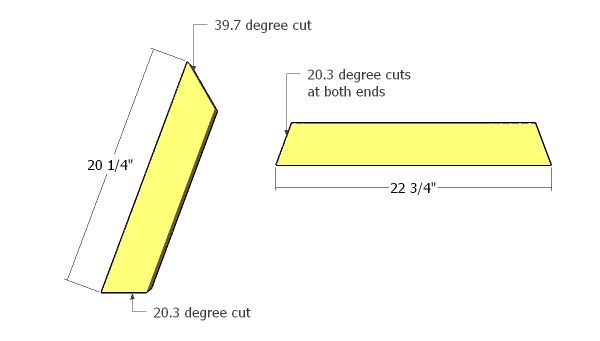
Building the legs
The first step of the project is to build the 2 A-frames for the small raised vegetable trough. Therefore, cut the legs and the braces from 2×4 lumber. Use a saw to make the angle cuts to the components, as shown in the diagram.
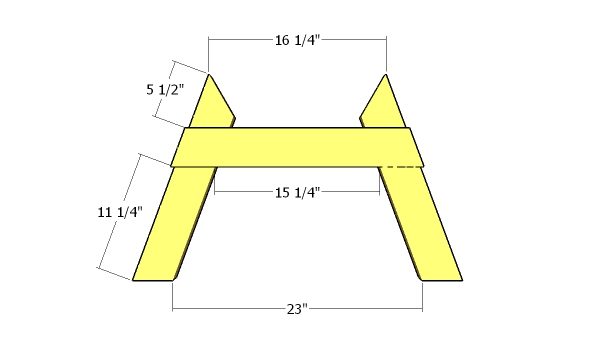
Assembling the A frame legs
Lay the legs on a level surface and then attach the braces. Align the edges with attention, drill pilot holes through the braces and insert 2 1/2″ screws to secure them into place tightly.
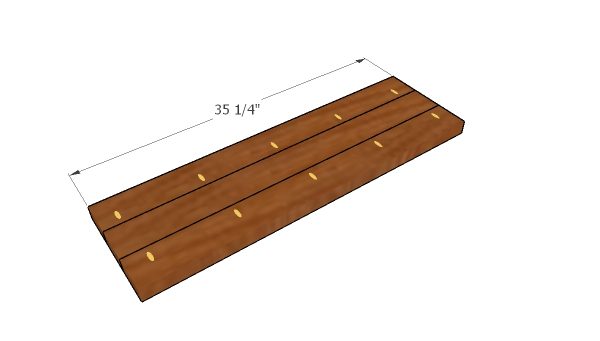
Bottom
Use 2×4 lumber for the bottom of the small waist high garden planter. Drill pocket holes along the sides of the slats, as shown in the diagram. Add glue to the joints and insert 2 1/2″ screws, to assemble the bottom of the trough.
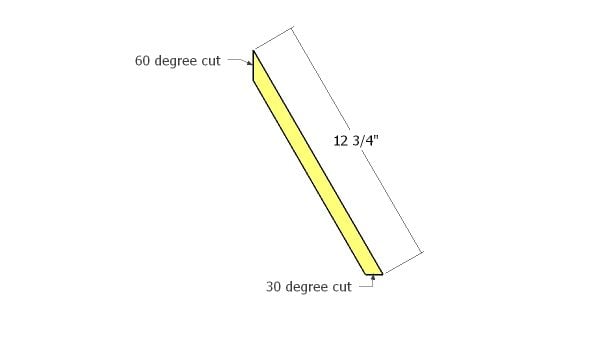
Building the diagonal supports
Use 1×2 lumber for the diagonal supports. Use a miter saw to make the angle cuts at both ends of the supports, as shown in the diagram.
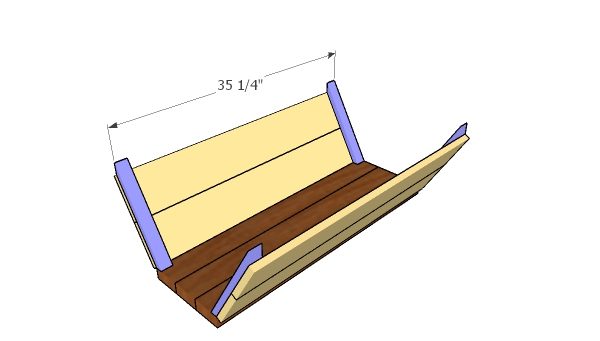
Fitting the side walls
Fit the supports and the 1×6 slats to the sides of the vegetable trough. Align the edges at both ends and leave no gaps between the slats. Drill pilot holes trough the slats and insert 1 5/8″ screws into the supports.
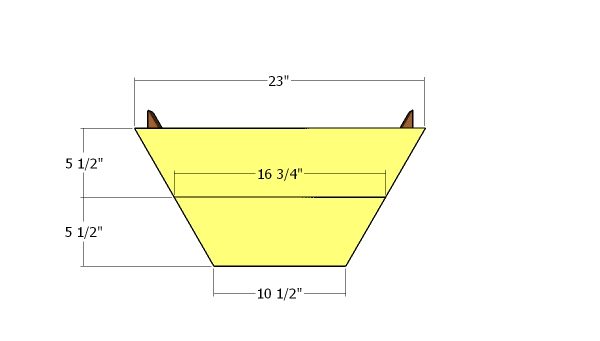
End slats
Fit the 1×6 slats to the ends of the garden planter. Use a circular saw to make the angle cuts and then align the edges with attention. Drill pilot holes and insert 1 5/8″ screws to lock the slats into place tightly. Leave no gaps between the slats.

Fitting the top slats
Fit the 1×6 slats to the top of the vegetable trough planter. Use 1 5/8″ screws to secure the slats to the planter. Make sure the corners are square and align the edges with attention.
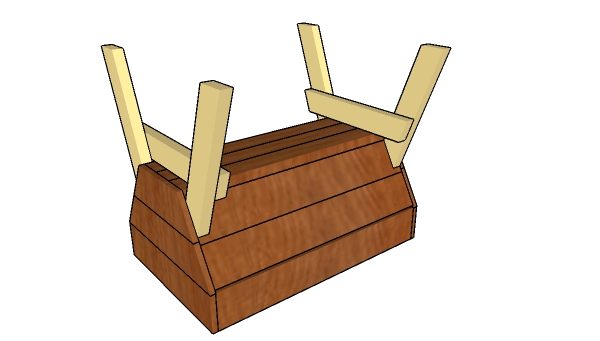
Fitting the a-frames
Fit the A-frames to the bottom of the wooden planter. Use a carpentry square to make sure the corners are square and then drill pilot holes. Insert 2 1/2″ screws to secure the A-frames to the veg trough planter.
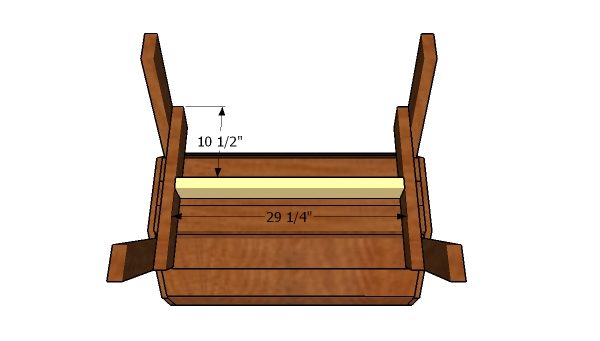
Fitting the stretcher
Fill the 2×4 stretchers between the legs of the vegetable planter. Drill pocket holes at both ends of the supports and then secure them to the A-frames with 2 1/2″ screws.
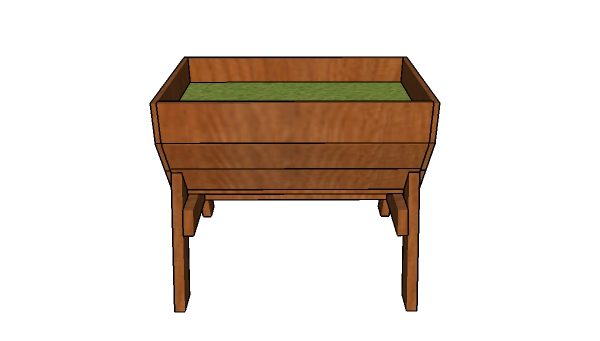
Raised vegetable trough plans
Last but not least, you need to take care of the finishing touches. Fill the holes and the dents with wood putty and then smooth the surface with 120-220 grit sandpaper. Smooth the edges, as well. You can staple landscaping fabric inside the planter box, so you can protect the wood from the elements.
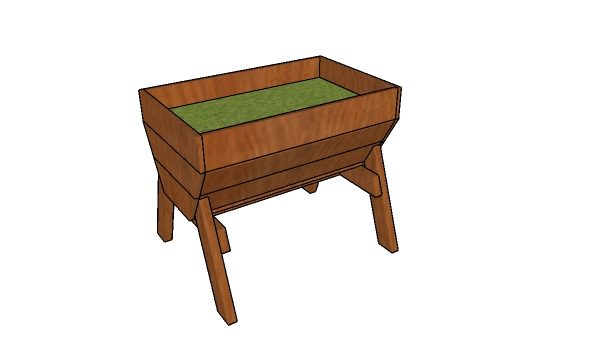
Small raised vegetable planter plans
Fill the vegetable trough planter with the appropriate soil and then make sure you start your garden. Make sure you check all my planter plans HERE. If you like my project, don’t forget to SHARE it on Facebook and Pinterest.
Thank you for reading our project about small vegetable raised wooden trough planter plans and I recommend you to check out the rest of the projects. Don’t forget to LIKE and SHARE our projects with your friends, by using the social media widgets. SUBSCRIBE to be the first that gets our latest projects.
